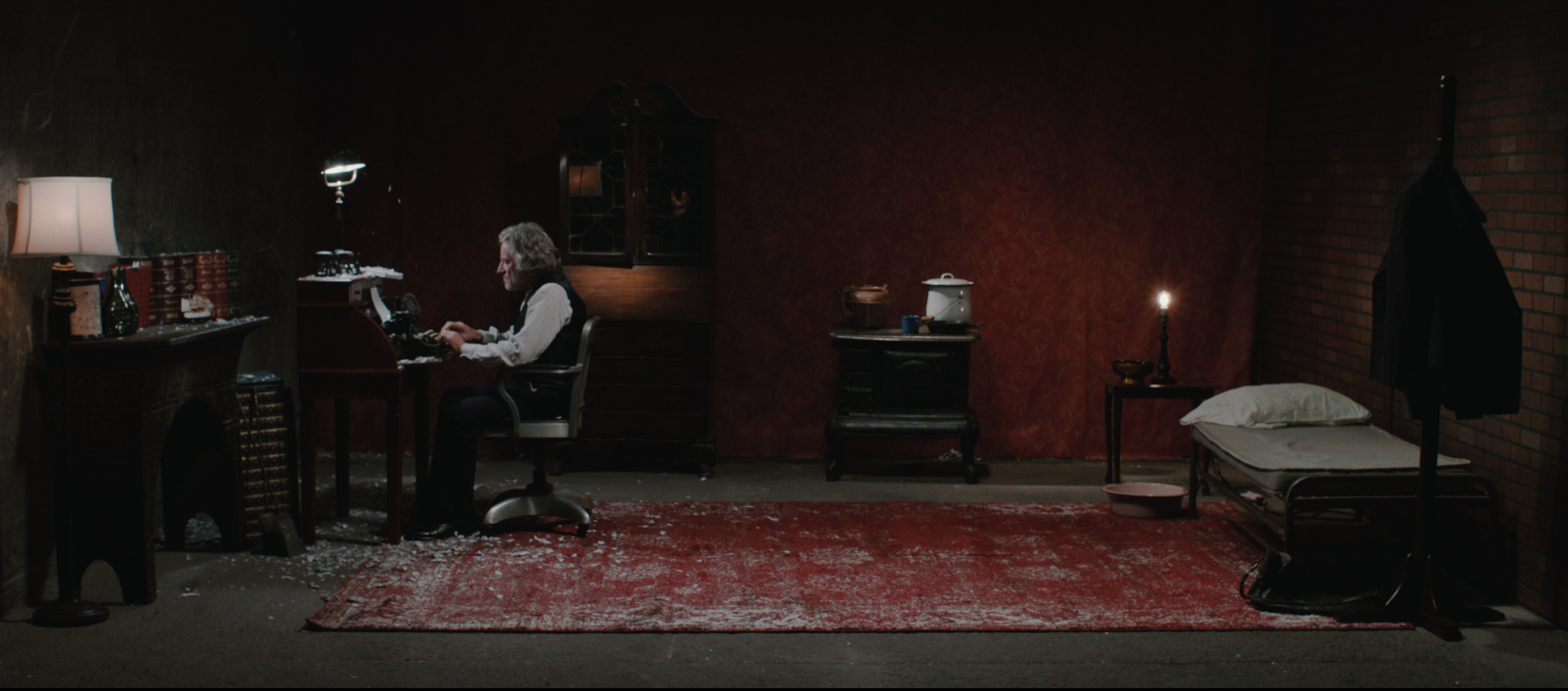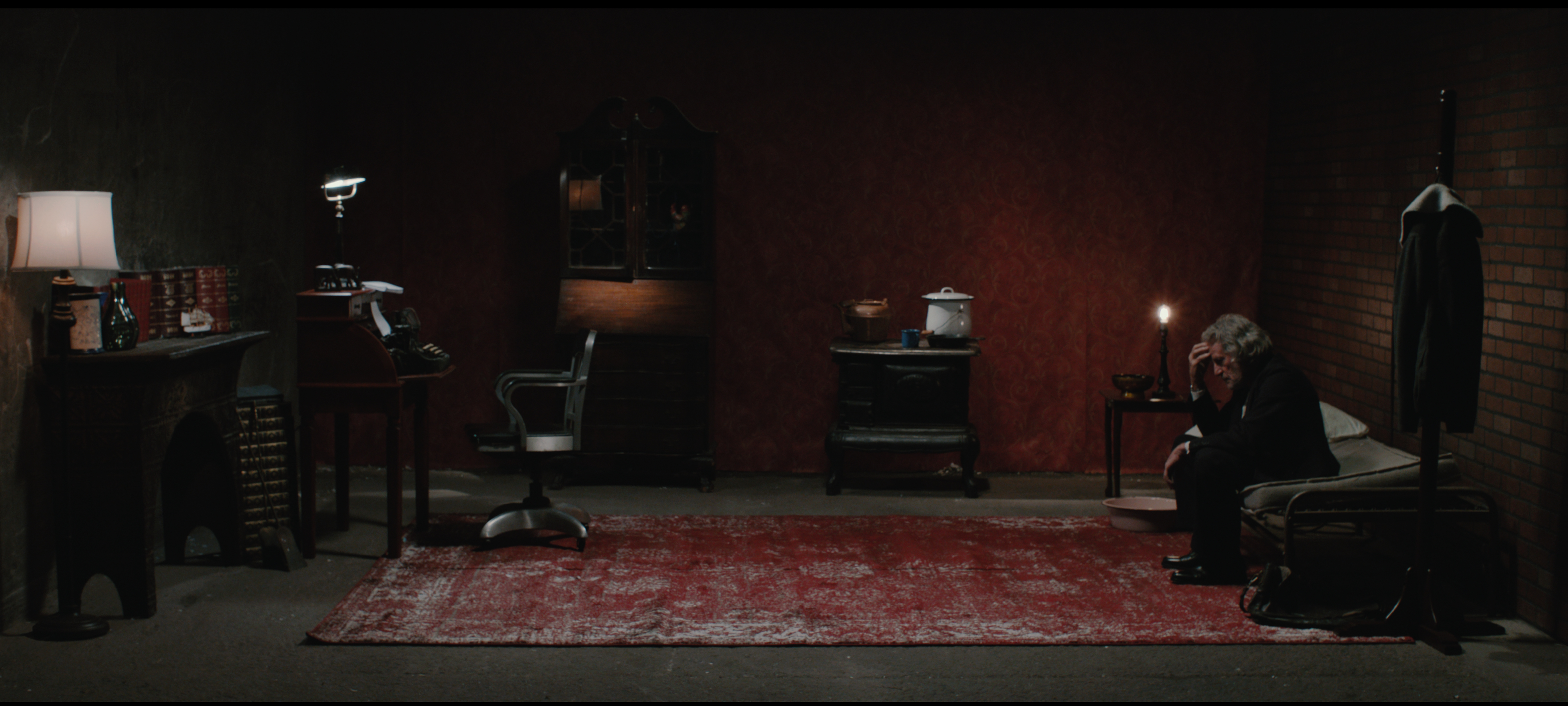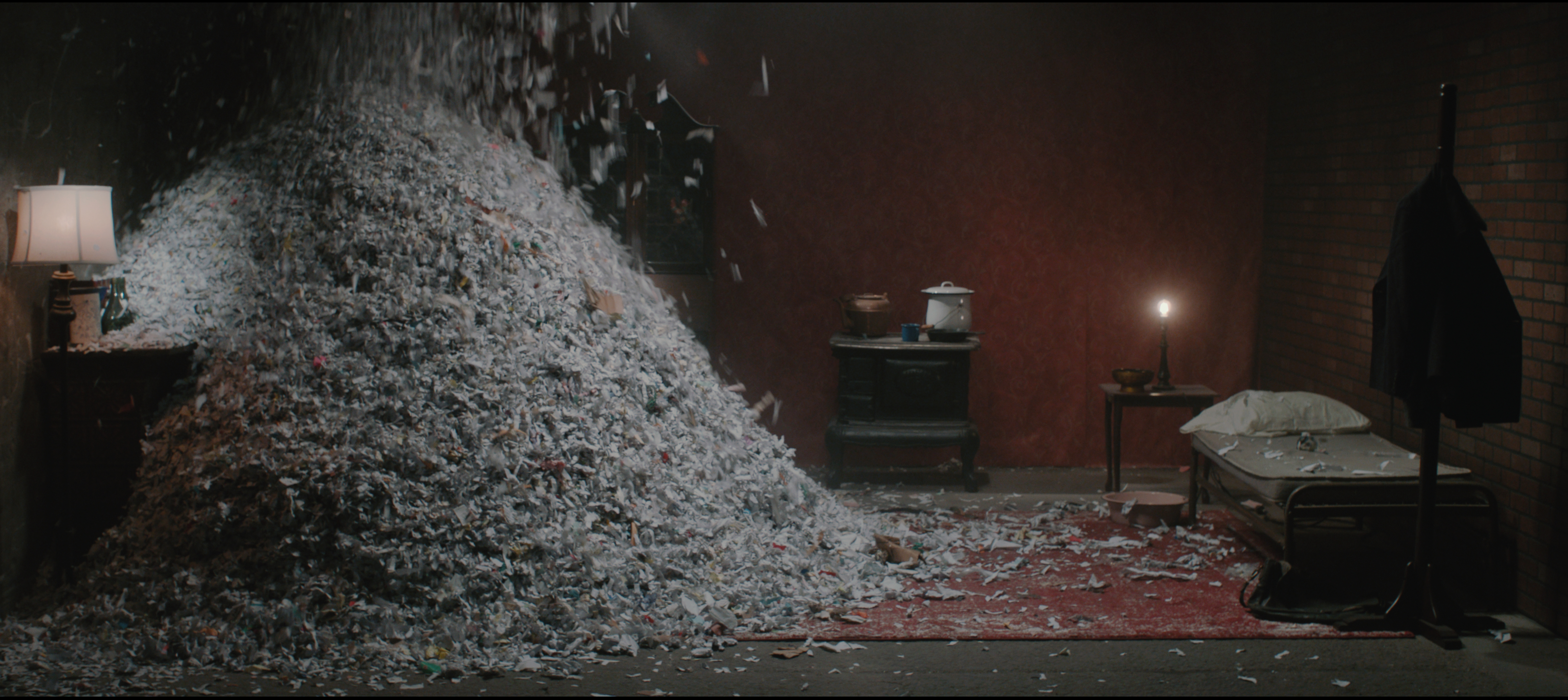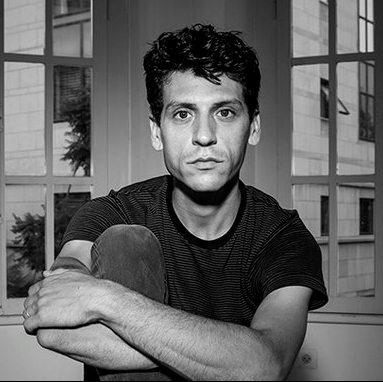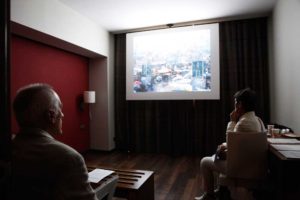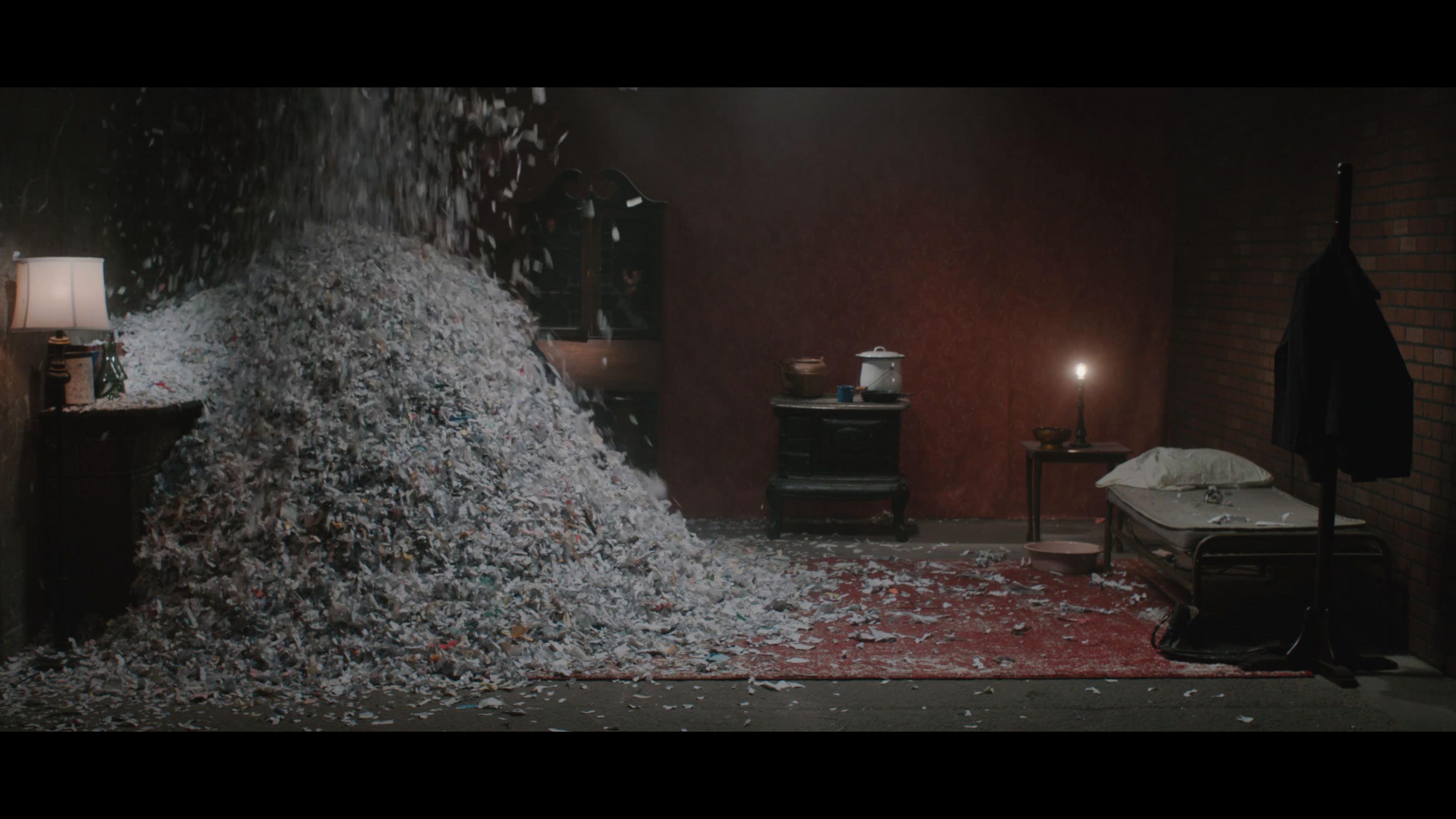
— Log in to watch the artist video if you have been given an access
- Artist
- Tom Pnini
- Title
- Paperweight
- Year
- 2017
- Duration
- 9 min 13 s
- Format & Technical
Single channel, colour, sound
5 + 2 AP
A single scene, a steady camera and an extremely simple action in a setting that takes us back to the end of the 19th century: a man moves from his cot to his typewriter, where he sets to work completing his latest masterpiece. When he starts to pound the keys, a shower of paper begins to fall onto his head. The stream of paper increases in intensity and almost completely covers him. Only an undeterred body is left under the dense mountain of papers.
The possibility of introducing the notion of time was one of the great novelties in the creation of the moving image. Paperweight consists of a single take where the time elapsed during the action we watch is synchronised with our clocks. But the story told, that of an author pitted against his creative process, suggests another temporality, a totally relative one. The young Tom Pnini structures his work on this opposition of times: the scientific versus the subjective.
Pnini finds his references in the masters of classic cinema. Like magicians searching for the best illusion, in cinema, the first illusionist was the French George Méliès. In a single scene with a fixed camera, in a setting very similar to the one presented in this video, he had the elements he needed to do his trick through the resource of montage: the woman we observed seated in the chair was transformed into a skeleton. Later on, the possibility of creating the illusion of continuous time was challenged by the master of silent film, Buster Keaton, who wanted to do his tricks without cuts. And so an alienation takes place: what we see is the union of the trompe l’oeil and a physical ability, which in Keaton’s case came from his days as a Vaudeville artist.
In Paperweight, point of view and the creation of reality share form —video— and content —the story of the writer. From the second half of the 20th century onwards, video served as the place for deconstructing codes of representation and breaking their syntaxes, and yet Pnini creates a linear scene in real time. He pays not only a formal homage to the origins of the moving image, but also an ontological one, as he plays with the ability of the camera, sometimes celebrated and others reviled, to create this ambiguity before the naked eye, which never knows if what it is observing is an illusion or reality. For all its omnipotent ambition, the eye could never know, and will never know, if what it sees is a ruse or a skill.
Melina Ruiz Natali
Stills
